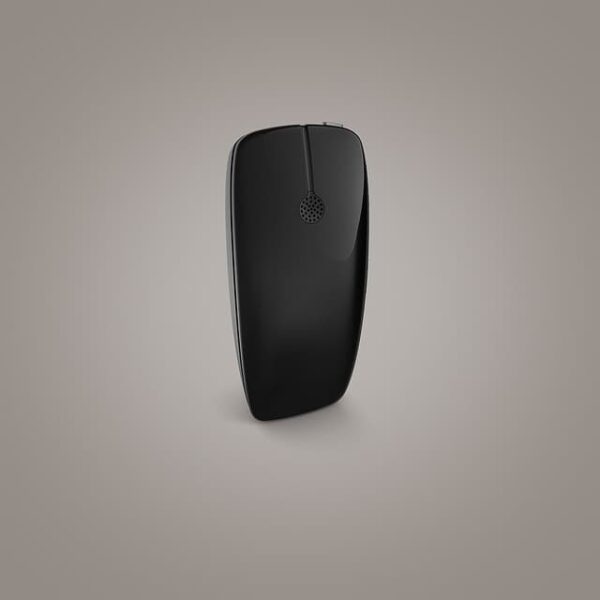Has your child tried direct streaming audio to their cochlear implant? Learn how it can help them with listening practice.
Streaming is a great way for your child or teen to stay connected – and it’s proven to offer benefits in hearing with a sound processor.123
As well as helping your child enjoy more types of entertainment, listen to phone calls and even study, it can also help to improve their listening skills.
Much research has been done on how direct streaming can deliver benefits to those who use cochlear implants and hearing aids.4
But how does it really help? And how should your child make the most of it?
Hearing more clearly with direct streaming
Direct streaming is all about delivering high quality sound straight to a sound processor from a compatible5 device like a smartphone. Eliminating sounds like echo, reverb or poor quality from cheap acoustic speakers helps gives a clearer, crisper listening experience.
One study found that using streaming to talk on the phone improved word recognition in quiet and noise, compared to talking on the phone normally.6
Tip:
“I tend to stream from my AppleTM iPhone7 straight to my processors. Sometimes I’ll use the laptop, which I access by using a Mini Mic 2+, but direct wireless streaming is more practical for me. The main positive is not having to always rely on neck loops or ear hooks.”
Improving listening with direct streaming
As your child advances in their listening practice, direct streaming can help them extend their listening skills.
1. Encourage your child to listen to music
Direct streaming can be used to enjoy music, which helps to build listening skills. Start with a variety of music styles with simpler songs and tunes and gradually move to more complex music.
2. Suggest listening to audio books
Listening to audiobooks and following the printed text as well helps a child pick up unclear or misheard words. Start with short or familiar books or stories and gradually move to longer or more complicated plots.
A parent’s tip
“My main tip is: Give it a go! Find a topic that your child or teen is interested in and get them to just try having a listen.”- Shannon, who has a cochlear implant.
3. Use TED Talks and YouTube
TED Talks are just 18 minutes so they’re ideal to build listening skills without getting fatigued. And with optional captioning, the visual cues support listening. YouTube also helps to improve listening and language skills – the facial cues help children interpret what is being said.
A teen’s tip
“The variety of topics, voices, and pitches really gets your ears listening. I tend to be around the same people, so I get used to their voices and way of speaking. When coming across different people and accents, I’d struggle. TED Talks seemed like a really good way to listen to unfamiliar voices and accents. It didn’t matter if I couldn’t understand it; I’d just find something else and give that a try.” – Shannon, who has a cochlear implant.
4. Take things slowly
Keep your child’s listening sessions short (at least initially) to minimize fatigue.
Tip:
“Building up listening time gradually makes a huge difference. You have to allow yourself to adjust to the world of sound – some people find this easy; others struggle. Don’t be disheartened if you don’t reach your goal straight away. We all progress at different rates, and that’s okay.” – Shannon, who has a cochlear implant.
The future of direct streaming
Technology for direct streaming is going to evolve over time to include more devices and more opportunities for your child to enjoy life with clearer sound. For example, Cochlear™ Nucleus® Nexa™ Sound Processors are ready for the next generation of Bluetooth® technology8, which will offer direct streaming from smart TVs, laptops and a growing list of personal devices, when available. It will also be possible to tap into broadcasts at airports, theatres and public venues.9
To pair your devices and get ready to start streaming, watch these YouTube videos.
To learn more about the benefits of direct streaming click here.
- Wolfe J, et al. Evaluation of a wireless audio streaming accessory to improve mobile telephone performance of cochlear implant users. International Journal of Audiology. 2016;55(2):75-82.
- Wolfe J, et al. Improving hearing performance for cochlear implant recipients with use of a digital, wireless, remote-microphone, audio-streaming accessory. J Am Acad Audiol. 2015 Jun;26(6):532-9.
- Warren C, Nel E, and Boyd P. Controlled comparative clinical trial of hearing benefit outcomes for users of the Cochlear™ Nucleus® 7 Sound Processor with mobile connectivity. Cochlear Implants International (2019 Feb); 20(3).
- Jespersen, Charlotte T. “A review of wireless hearing aid advantages.” The Hearing Review 2012;19(2):48–54.
- For information regarding the compatibility of Cochlear’s Sound Processors with True Wireless, Apple or Android devices, visit www.cochlear.com/compatibility.
- Wolfe J, et al. Evaluation of a wireless audio streaming accessory to improve mobile telephone performance of cochlear implant users. International Journal of Audiology. 2016;55(2):75-82.
- Apple, the Apple logo, Apple Watch, FaceTime, Made for iPad logo, Made for iPhone logo, Made for iPod logo, iPhone, iPad Pro, iPad Air, iPad mini, iPad and iPod touch are trademarks of Apple Inc., registered in the U.S. and other countries. App Store is a service mark of Apple Inc., registered in the U.S. and other countries.
- As Bluetooth LE Audio compatible devices become available, a firmware update will be required for you to use certain features.
- Auracast™ broadcast audio capability is subject to third party adoption of the Auracast protocol.

